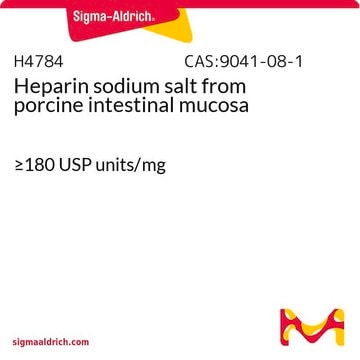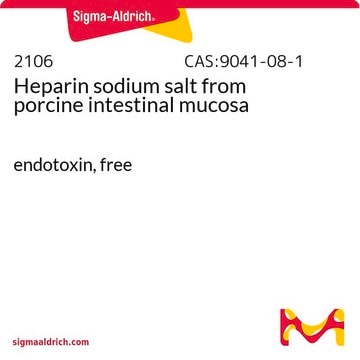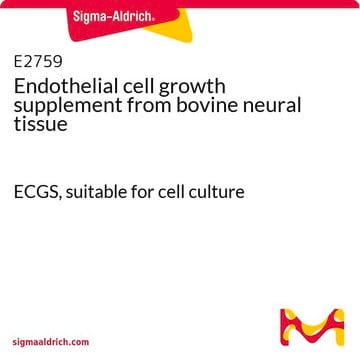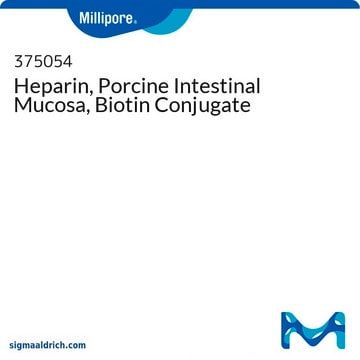H3149
Heparin sodium salt from porcine intestinal mucosa
Grade I-A, ≥180 USP units/mg, powder, BioReagent, suitable for cell culture
About This Item
Recommended Products
biological source
Porcine intestinal mucosa
Quality Level
type
Grade I-A
product line
BioReagent
form
powder
specific activity
≥180 USP units/mg
technique(s)
analytical sample preparation: suitable
cell culture | mammalian: suitable
color
beige
solubility
H2O: 50 mg/mL
application(s)
cell analysis
diagnostic assay manufacturing
life science and biopharma
sample preparation
Looking for similar products? Visit Product Comparison Guide
General description
Application
- Heparin sodium salt from porcine intestinal mucosa has been used in sLRP (soluble circulating low density lipoprotein receptor-related protein-1) purification from human plasma.
- It has been used as a supplement in M199 medium for culturing of human umbilical vein endothelial cells.
- It has been used as an anticoagulant agent during isolation of blood.
Features and Benefits
- High-purity compound suitable for a wide variety of research applications
Other Notes
comparable product
Storage Class Code
11 - Combustible Solids
WGK
WGK 2
Flash Point(F)
Not applicable
Flash Point(C)
Not applicable
Personal Protective Equipment
Choose from one of the most recent versions:
Certificates of Analysis (COA)
Don't see the Right Version?
If you require a particular version, you can look up a specific certificate by the Lot or Batch number.
Already Own This Product?
Find documentation for the products that you have recently purchased in the Document Library.
Customers Also Viewed
Our team of scientists has experience in all areas of research including Life Science, Material Science, Chemical Synthesis, Chromatography, Analytical and many others.
Contact Technical Service









